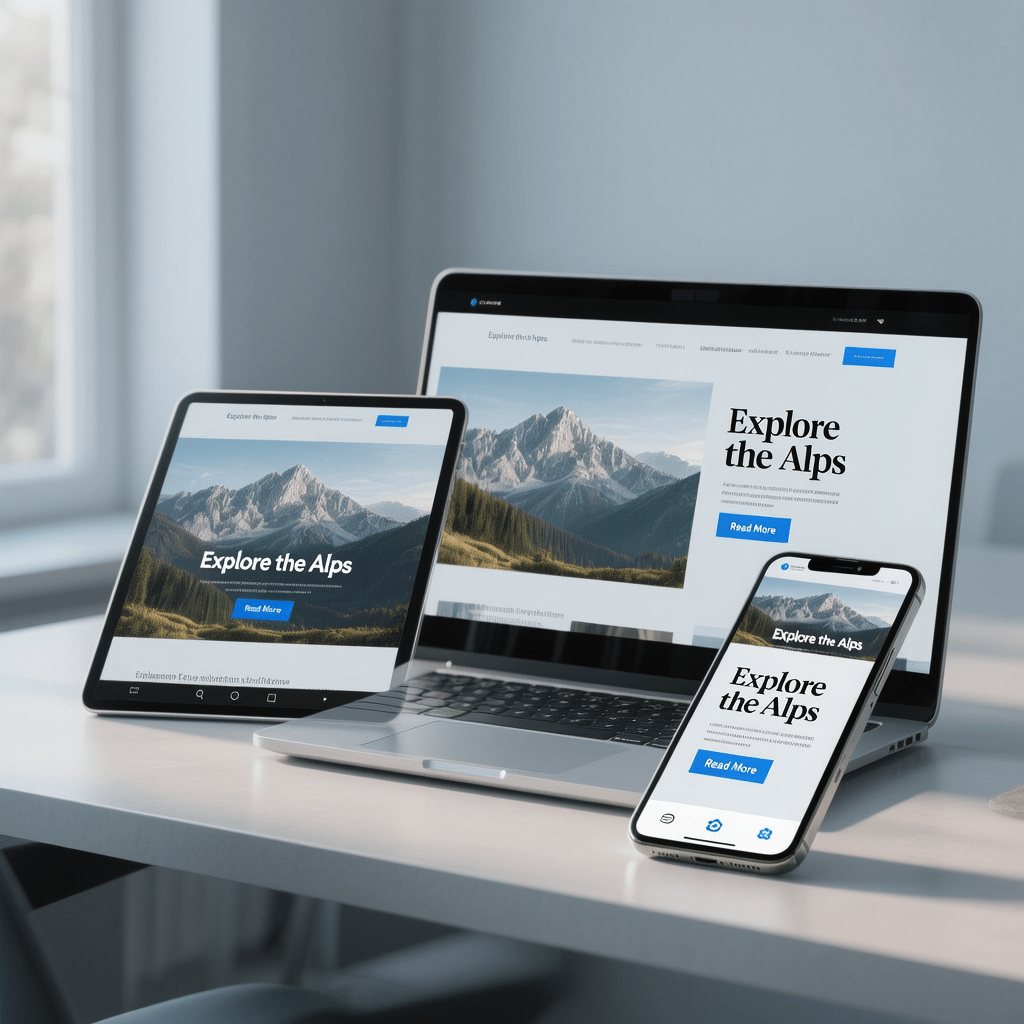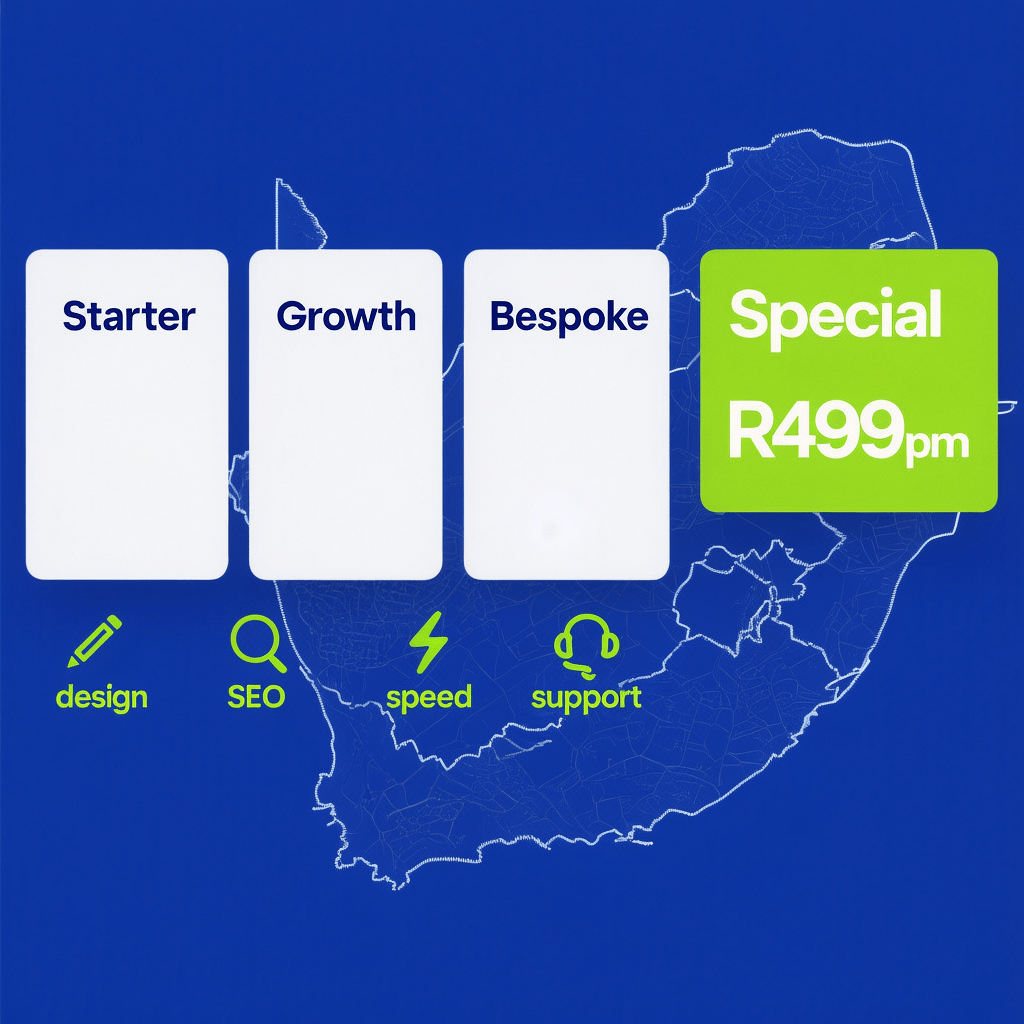
Feature image showing fast hero text rendering with optimized font workflow
Custom Font Loading Strategy for LCP: 12 Proven Wins
By Morne de Heer, Published by Brand Nexus Studios

Here is the truth. If your hero headline paints late, users bounce. A custom font loading strategy for lcp turns your typography into an asset, not a blocker. When fonts ship lean, paint fast, and swap cleanly, your Largest Contentful Paint drops and conversions rise.
Because LCP measures how quickly your biggest above-the-fold element appears, fonts sit on the critical path whenever that element is text. With the right tactics, you can keep your brand type while giving users instant legibility and stable layout.
In this guide, you will build a battle tested custom font loading strategy for LCP. We cover subsetting, preloads, fallbacks, caching, and measurement so you can ship a fast, beautiful site on any network.
Why LCP matters for growth and UX
Start with the metric. LCP is one of the Core Web Vitals and reflects perceived speed. When your LCP is under 2.5 seconds in the 75th percentile, users feel the site is responsive and credible.
But fonts often delay paint. If your hero copy relies on a custom typeface and the browser blocks rendering until it downloads, the timer keeps ticking. That is why a custom font loading strategy for LCP is a direct lever on revenue, engagement, and SEO.
Moreover, a faster LCP improves accessibility. People on slow devices or high latency connections see readable text sooner. That simple improvement reduces frustration and raises trust across your audience.
How fonts influence Largest Contentful Paint
Now zoom in on the pipeline. The browser parses HTML, fetches CSS, and discovers font-face declarations. If the LCP element uses a web font that is not in cache, your render path waits on font files unless you choose a better display strategy.
Two failure modes stand out. FOIT is flash of invisible text where the browser hides text while waiting for the font. FOUT is flash of unstyled text where the fallback renders, then swaps to the web font later. Your custom font loading strategy for LCP should embrace controlled FOUT and avoid FOIT entirely.
Finally, font files can be large. If you ship full Unicode coverage for a Latin site, you will waste hundreds of kilobytes. Subsetting and compression will save bandwidth and shave precious milliseconds from LCP.
Browser font loading 101
First, the browser needs a font-face rule. Then it resolves URLs, negotiates TLS, downloads WOFF2, and decodes. Every step adds latency. With clever hints and caching, you can front load work and let the browser paint text immediately.
font-display is your control lever. swap paints with a system fallback, then applies the web font when ready. optional paints with the fallback and only swaps if the web font arrives quickly. Both are powerful tools for a custom font loading strategy for LCP.
Second, resource hints matter. preconnect opens the socket early. preload tells the browser the font is critical and must be fetched sooner. Combined with subsetting, these hints move your hero text to the front of the queue.

Build a custom font loading strategy for LCP
Let us craft the plan. Your goal is fast, stable text in the hero. That means tiny critical font files, early network hints, and metric compatible fallbacks that keep layout steady.
Below are the principles and the step by step playbook. When you apply them, your custom font loading strategy for LCP will be reliable across devices, geographies, and connection speeds.
Principle 1 – render text fast
Always allow text to paint with a safe system fallback. A user who can read is a user who stays. Let the brand font enhance the experience, not gate it.
Principle 2 – shrink the bytes
Subset to the glyphs you need for above-the-fold content. Prefer WOFF2 only for modern browsers. Remove old formats unless analytics show a real audience on legacy devices.
Principle 3 – hint early, hint right
Use preconnect on the font origin and preload only the exact files used in the LCP element. This focused approach is the heart of a custom font loading strategy for LCP.
Principle 4 – cache for repeat visits
Long lived immutable caching turns first time cost into a one time hit. On the next page, text paints instantly and your LCP looks stellar.
How to implement a custom font loading strategy for LCP
Follow this practical playbook. Each step is small, but together they produce a fast, consistent result. Document your choices, test under throttle, and ship with confidence.
1. Audit the LCP element and the font path
Start by finding the actual LCP element on your key templates. On many sites, it is the H1 or a hero paragraph. If it is text, your custom font loading strategy for LCP should only optimize the fonts that style this area.
- Run Lighthouse in Chrome DevTools and note the LCP selector.
- Open the Network panel and filter by font to list active font files.
- Capture file sizes, origins, and cache headers for each font.
2. Choose modern formats and drop legacy weight
Prefer WOFF2 for nearly all traffic. Consider WOFF only when analytics show old Safari or enterprise browsers. Avoid TTF and EOT in new stacks. This trims requests and simplifies your custom font loading strategy for LCP.
3. Subset glyphs with unicode-range
Cut the fat. Create a small Latin subset for the first paint and a full set for later. Then declare unicode-range so the browser picks the right file.
/* fonts.css */
@font-face {
font-family: 'Acme Sans';
src: url('/fonts/acme-sans-latin.woff2') format('woff2');
font-weight: 400;
font-style: normal;
font-display: swap;
unicode-range: U+000-5FF; /* Basic Latin and Latin-1 Supplement */
}
@font-face {
font-family: 'Acme Sans';
src: url('/fonts/acme-sans-full.woff2') format('woff2');
font-weight: 400;
font-style: normal;
font-display: swap;
}With subsetting, your custom font loading strategy for LCP ships a tiny first hit while preserving full language support after initial paint.

4. Use font-display to avoid FOIT
Set font-display: swap for all critical fonts. That single rule moves you from invisible text to readable content. For ultra conservative networks, test optional to favor faster LCP even if the web font never swaps in on slow devices.
5. Preconnect to the font origin
Reduce connection setup overhead with preconnect. This helps your custom font loading strategy for LCP cut DNS, TCP, and TLS latency before the browser discovers the font in CSS.
<link rel="preconnect" href="https://your-cdn.example" crossorigin>6. Preload only the critical WOFF2 files
Be surgical. Preload the exact files used by the LCP text. Skip heavy weights, italics, and non critical subsets. You want the smallest possible payload for the first paint.
<link rel="preload" as="font" type="font/woff2" href="/fonts/acme-sans-latin.woff2" crossorigin>This targeted preload is a cornerstone of your custom font loading strategy for LCP.
7. Build metric compatible fallback stacks
Fallback quality decides visual stability. Pick a system font with similar metrics to your brand font to limit layout shift on swap. Tune size-adjust and ascent-override if supported.
/* Fallback stack and metric overrides */
:root {
--font-sans: 'Acme Sans', system-ui, -apple-system, Segoe UI, Roboto, Helvetica, Arial, sans-serif;
}
body {
font-family: var(--font-sans);
font-size: 1rem;
line-height: 1.5;
}
@font-face {
font-family: 'Acme Sans';
src: url('/fonts/acme-sans-latin.woff2') format('woff2');
font-weight: 400;
font-style: normal;
font-display: swap;
ascent-override: 92%;
descent-override: 22%;
line-gap-override: 0%;
size-adjust: 98%;
}Metric overrides keep content from jumping, which protects CLS while your custom font loading strategy for LCP accelerates paint.

8. Consider variable fonts wisely
Variable fonts can consolidate many weights into one file. When you subset and preload carefully, they reduce requests and simplify your custom font loading strategy for LCP.
@font-face {
font-family: 'Acme VF';
src: url('/fonts/acme-variable.woff2') format('woff2');
font-weight: 200 800;
font-stretch: 75% 125%;
font-style: normal;
font-display: swap;
}
9. Self host with strong caching
Self hosting gives you control over headers and naming. Serve fonts with long max-age and immutable file names so repeat visits skip the network entirely.
# Example HTTP headers
Cache-Control: public, max-age=31536000, immutable
Access-Control-Allow-Origin: *This is a big win for your custom font loading strategy for LCP on content heavy sites with frequent navigation.
10. Optimize delivery and compression
Ensure brotli or gzip on CSS and JavaScript. Keep font files already optimal since WOFF2 is compressed. Use HTTP 2 or HTTP 3, and enable server side caching. Mentioning page speed explicitly matters, so compress images and turn on caching to cut bandwidth.
11. Inline critical CSS and lazy load non critical fonts
Inline the minimal CSS needed to style the hero so the browser paints faster. Load additional font weights with font loading API after the first paint. This keeps your custom font loading strategy for LCP lean.
// Load non critical weights after first paint
if ('fonts' in document) {
document.fonts.load('1rem "Acme Sans" 700').then(() => {
document.documentElement.classList.add('fonts-700-ready');
});
}12. Measure, iterate, and lock wins
Track LCP across templates and devices. A good custom font loading strategy for LCP is tested under 4G and slow 3G throttle with CPU slowdown. Keep the changes that reduce median and P75 LCP without hurting brand fidelity.
Performance measurement and validation
Now prove the gains. Use Lighthouse for lab checks, WebPageTest for deep waterfalls, and field data from your analytics. Watch the render timeline to confirm earlier first text paint and lower LCP.
For real user monitoring, observe LCP with the PerformanceObserver API. Tie metrics to releases so you can attribute improvements to your custom font loading strategy for LCP.
// Measure LCP in the field
let lcpValue = 0;
new PerformanceObserver((entryList) => {
const entries = entryList.getEntries();
const last = entries[entries.length - 1];
lcpValue = last.renderTime || last.loadTime || lcpValue;
// sendToAnalytics('lcp', lcpValue);
}).observe({ type: 'largest-contentful-paint', buffered: true });
window.addEventListener('visibilitychange', function() {
if (document.visibilityState === 'hidden') {
// sendToAnalytics('lcp-final', lcpValue);
}
});Repeat tests with and without preloads. Validate that only the LCP fonts are preloaded. This keeps your custom font loading strategy for LCP efficient and avoids wasted bandwidth.

Design, branding, and typography tradeoffs
Design choices impact speed. Wide letterforms, heavy weights, and multiple families increase file size. Balance aesthetics with performance by limiting weights above the fold and reserving display cuts for later sections.
Consider progressive enhancement. Paint with a system font first, then upgrade to your brand font once the user is engaged. This keeps your custom font loading strategy for LCP in harmony with brand goals.
If you need expert help aligning design and performance, our team at website design and development can audit typography and ship a scalable, fast build. This is a subtle promotion of Brand Nexus Studios expertise in full stack delivery.
Common pitfalls to avoid
- Preloading every font on the site. This floods the queue and delays the LCP resource. Preload only what styles the hero.
- Using font-display: auto, which often hides text. Prefer swap or optional for a custom font loading strategy for LCP that paints consistently.
- Shipping full Unicode when only Latin is needed above the fold. Subset aggressively and load full sets later.
- Short cache lifetimes that force re-downloads. Use long max-age with immutable file names.
- Multiple font providers. Consolidate to one origin to reduce connection overhead.
Avoiding these traps keeps your custom font loading strategy for LCP clean and sustainable.
Case study style walkthrough
Imagine a marketing site where the hero H1 uses a bold custom sans. LCP sits at 3.1 seconds on mid tier Android. The waterfall shows late font discovery and a 120 KB font file.
We apply subsetting to a 28 KB Latin WOFF2, add preconnect and a single targeted preload, switch to font-display: swap, and tune fallbacks with size-adjust. After changes, LCP drops to 2.1 seconds. The layout stays stable and the branding looks intact.
This is the practical power of a custom font loading strategy for LCP. It is repeatable and measurable across pages and campaigns.
If you want ongoing Core Web Vitals improvements tied to growth, explore our SEO services. We pair technical fixes with content and link strategies for durable gains.
Page speed boosters that support font performance
Fonts do not exist in isolation. Optimize your critical path holistically so that font wins are not lost in other bottlenecks. Combine a custom font loading strategy for LCP with the following quick wins.
- Compress all images. Use modern formats and tools. Always ship responsive sizes and set width and height to avoid CLS.
- Enable caching with a CDN. Push assets near users and reduce origin load.
- Defer non critical scripts. Inline critical CSS and split bundles.
- Use HTTP 2 or HTTP 3 to multiplex requests efficiently.
- Minify CSS and remove unused rules.
For continuous tracking, our analytics and reporting service turns Core Web Vitals into a monthly dashboard. Tie LCP to leads and revenue so each technical change has a clear business case.
Copy paste snippets for a fast setup
Use these snippets to bootstrap your custom font loading strategy for LCP. Adjust paths and names to match your stack.
HTML head hints
<!-- Early connection to font host -->
<link rel="preconnect" href="https://cdn.example.com" crossorigin>
<!-- Targeted preload for LCP text font -->
<link rel="preload" as="font" type="font/woff2" href="/fonts/acme-sans-latin.woff2" crossorigin>
<!-- Inline critical CSS if small -->
<style>
:root { --font-sans: 'Acme Sans', system-ui, -apple-system, Segoe UI, Roboto, Helvetica, Arial, sans-serif; }
h1.hero { font-family: var(--font-sans); font-weight: 700; }
</style>CSS font-face with display and metrics
@font-face {
font-family: 'Acme Sans';
src: url('/fonts/acme-sans-latin.woff2') format('woff2');
font-weight: 700;
font-style: normal;
font-display: swap;
unicode-range: U+000-5FF;
size-adjust: 100%;
ascent-override: 90%;
descent-override: 22%;
}JS late loading non critical fonts
if ('fonts' in document) {
// Load italics after first interaction
addEventListener('load', () => {
document.fonts.load('1rem "Acme Sans" italic 400');
});
}These patterns keep your custom font loading strategy for LCP focused on hero text while deferring nice to have styles.
Checklist you can ship today
Work through this list to get concrete results. It maps directly to a custom font loading strategy for LCP and avoids common mistakes.
- Confirm the LCP element is text on your homepage and top templates.
- Subset to a small Latin WOFF2 for first paint. Keep it under 30 KB if possible.
- Use font-display: swap for critical fonts. Consider optional for slow networks.
- Add preconnect to the font origin and a single targeted preload per critical font file.
- Set metric compatible fallbacks and tune size-adjust to limit layout shift.
- Self host with long immutable caching. Verify CORS headers.
- Measure LCP before and after with consistent throttle. Keep the wins.
FAQs
What is LCP and why do fonts affect it?
LCP is Largest Contentful Paint. When your hero text uses a web font, the browser may wait for that font, which delays the paint. A custom font loading strategy for LCP avoids blocking by allowing fast fallback paint and preloading a tiny subset.
Does preloading fonts always improve LCP?
No. Preloading the wrong files can slow everything else. Preload only the subset that styles your LCP text. That narrow focus is key to a custom font loading strategy for LCP.
Which font-display is best?
swap is a great default. optional can be better on very slow networks. Test both and keep the choice that gives the fastest LCP with acceptable visual stability.
Should I self host or use a CDN provider?
Self hosting increases control and cache hits on repeat views. It often wins for a custom font loading strategy for LCP. A reliable CDN plus self hosting is a strong combination.
How do variable fonts change the equation?
They reduce file count and can simplify preloads. Subset the axes you need and keep the first paint payload small. The result supports a faster custom font loading strategy for LCP.
How do I keep images fast too?
Compress images, serve responsive sizes, and cache aggressively. Mention compression and caching in your workflow because every byte saved supports your font gains and lowers LCP further.
Where can I get help implementing this?
If you want an expert build, Brand Nexus Studios can design, develop, host, and maintain a fast site with a proven custom font loading strategy for LCP baked in.
References




